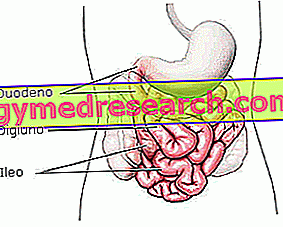Generality
The term "haemolytic anemia" is used to indicate a set of blood disorders, characterized by a shortening of the average life of the circulating red blood cells and their premature destruction (extravascular and / or intravascular hemolysis). Furthermore, in the case of hemolytic anemia, the synthesis of new red blood cells by the erythropoietic system is insufficient to compensate for their loss.

Types of Hemolytic Anemias
There are several forms of haemolytic anemia, which can be divided into two large groups, depending on the type of cause that induces haemolysis. In this regard, we can distinguish: hemolytic anemias from intraglobular causes and hemolytic anemias from extraglobular causes.
Hemolytic anemia from intraglobular causes
As can be guessed from the same name, this form of hemolytic anemia is triggered by intraglobular defects, that is by internal alterations to the red blood cell.
The abnormalities that induce hemolysis can be genetic or acquired, and may involve metabolic processes, function, or the cell membrane, hence the structure of red blood cells.
Among the forms of hemolytic anemia belonging to this group, we recall:
- Deficiency of glucose 6-phosphate dehydrogenase and favism;
- Hereditary spherocytosis;
- Paroxysmal nocturnal hemoglobinuria;
- Thalassemia.
Hemolytic anemia from extraglobular causes
In this form of hemolytic anemia, hemolysis is triggered by causes external to the red blood cell, which otherwise would not be destroyed prematurely.
The extrinsic changes that can induce hemolytic anemia, in turn, can be caused by:
- Immune system disorders;
- Intoxication from compounds or drugs with haemolytic activity (copper, lead, dapsone, methyldopa, sulfonamides, etc.);
- Infections sustained by microorganisms that can cause hemolysis through the release of toxins (as happens, for example, in the case of alpha- and beta-hemolytic streptococci), or through the invasion and consequent destruction of the red blood cell performed directly by the same micro-organism ( as happens, for example, in the case of Plasmodium spp. and Bartonella spp.);
- Neoplastic diseases (tumors);
- Mechanical damage (trauma).
Among the various forms of hemolytic anemia belonging to this group, we recall the autoimmune hemolytic anemias.
Diagnosis
The diagnosis of haemolytic anemia - as well as through a first evaluation of the symptoms presented by the patient - is carried out by the doctor through the use of specific diagnostic and laboratory tests, including the peripheral blood smear and blood tests to determine the blood levels of reticulocytes, indirect bilirubin, lactate dehydrogenase (LDH) and iron, which are increased in the event of haemolytic anemia. In the same way, in case of suspected haemolytic anemia, haemoglobin blood levels are also evaluated, which in the event of hemolysis will instead be decreased.
Once the diagnosis of haemolytic anemia has been confirmed, the doctor will perform further diagnostic tests to determine which form has affected the patient. Among these tests, we note the quantitative hemoglobin electrophoresis, the flow cytometry and the Coombs test.
Symptoms
The symptoms of haemolytic anemia may vary depending on the cause triggering hemolysis (intraglobular or extraglobular), therefore depending on the form of anemia the patient suffers, and depending on whether hemolysis occurs at an intravascular or extravascular level.
However, among the most common symptoms of hemolytic anemia, we recall:
- Asthenia;
- Adynamia;
- Dizziness;
- Hypotension;
- Chills;
- Temperature;
- Pallor;
- Hemoglobinuria resulting in the emission of reddish urine.
Furthermore, in more severe cases, patients may experience jaundice and splenomegaly.
Treatment
Similarly to what was said for the symptomatology of hemolytic anemia, its treatment also varies according to the cause triggering hemolysis.
For example, in the case of hemolytic anemia caused by drugs, in many cases, it is sufficient to suspend treatment with the active ingredients responsible for hemolysis.
In the case of haemolytic anemias caused by pathologies (such as tumors) or microorganisms, instead, it is usually used with a therapy aimed at treating the primary cause which is responsible, precisely, for the onset of haemolysis.
However, generally, the pharmacological treatments that can be implemented in the case of haemolytic anemia involve the administration of:
- Corticosteroid drugs (such as, for example, prednisone);
- Intravenous immunoglobulins ;
- Immunosuppressants (such as, for example, cyclophosphamide or azathioprine);
- Therapy with chelating agents, to bind excess iron in the bloodstream (hypersideremia);
- Iron- based therapy (martial therapy) carried out to compensate for the loss of iron, which usually occurs only in case of intravascular anemia (ie when hemolysis occurs inside the blood vessels).
Finally, in some cases it may be necessary to resort to transfusion of blood or surgery to remove the spleen (splenectomy).
In any case, the doctor will evaluate, on a case-by-case basis, the most suitable therapeutic strategy to be undertaken for the treatment of the form of haemolytic anemia that afflicts each patient, also depending on the health condition of the same.



